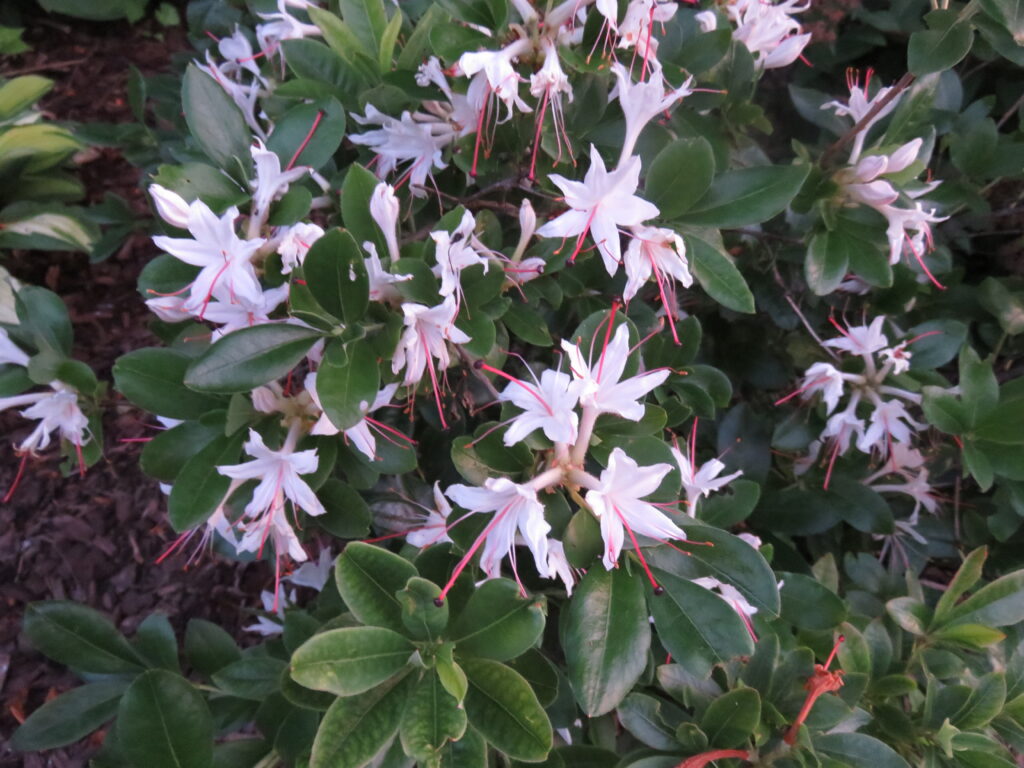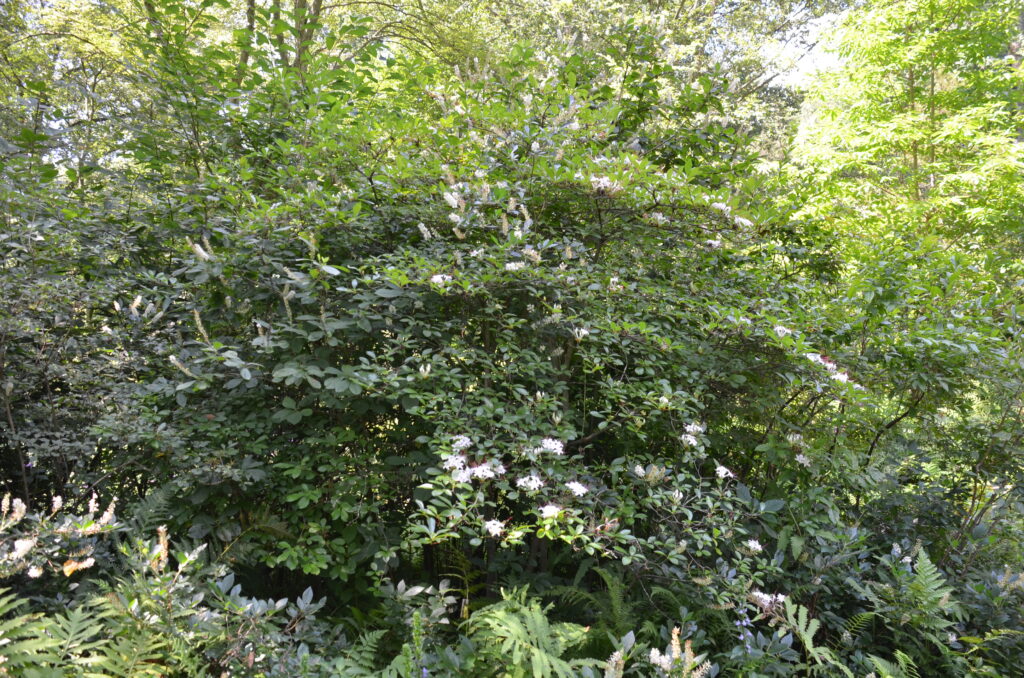
Sweet azalea (Rhododendron arborescens), aka smooth azalea, produces fragrant flowers in June. The native deciduous species grows along streams on woodland slopes and moist shrubby balds in the Appalachian Mountains from southern Pennsylvania and eastern Kentucky to North Georgia and Alabama. Here in Tennessee, you may spot this sweetly fragrant white blooms while hiking at the Gregory Bald near Cades Cove. (USDA hardiness zones 4-7)
Spring-summer dark green, 1-3 inches long leaves, are smooth, elliptic to obovate, and often blunt-tipped. Leaves turn red to purple in fall.
From late May to July, after leaves have emerged, the fuzzy-haired, funnel-shaped, white (occasionally pale pink) flowers open. Blooms average 2 inches across and are arranged in clusters of 3-6. Each white flower contains a red style and dark pink to red stamens which protrude beyond the mouth of the tubular corolla. Fruits are narrow, egg-shaped capsules (to 3/4” long).
Sweet azalea can reach 8 to 12 feet in height and width, occasionally to 20 feet. It requires full sun to partial shade in sandy soil with an acidic pH. Moist soil with good drainage is preferable. It spreads via underground runners and its shallow roots do not like cultivation around them. Deadhead an old sweet azalea in June, immediately after bloom to maintain its appearance.
Sweet azalea offers multiple seasons of interest. Pale pink or yellow fragrant flowers bloom from late spring to early summer and attract bees, butterflies, and hummingbirds. In the fall the foliage turns bright orange to crimson or purple color. The plant tolerates damage by rabbits but may be damaged by deer. Plant sweet azaleas in mixed planting borders, in open woods or shade gardens, in pollinator gardens, or rain gardens.

Selecting a proper planting site for sweet azaleas is of key importance. Full sun may scorch leaves and poorly drained soils may lead to Phytophthora root rot that causes reduced vigor, branch dieback, and wilting. Plant on a moist well-drained site in soil high in organic matter. Irrigate during prolonged dry weather.
A litany of disease and pest problems are possible if site conditions are poor Aphids, borers, lace bugs, leafhoppers, mealybugs, mites, nematodes, scale, thrips, and whitefly. Disease problems include but are not limited to canker, crown rot, root rot, leaf spot, rust, powdery mildew.

 Posted in
Posted in 
